Right, let’s cut to the chase: forget all those other narrow, limited, parochial and partisan Best Albums lists, here’s the only list you need: my round-up of the 40 albums that have charmed, enthralled, awed and amazed me the most during 2018. In case anyone was in any doubt, it’s been a very good year.
40 | Clarence Barlow – Musica Algorithmica
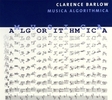 Various key facets of Barlow’s musical language are prominently displayed on this excellent double album portrait. One of the more unusual is the composer’s relationship with historical musical styles and mannerisms, which is not merely employed as a distinct compositional parameter but at a much more meta level, Barlow actually going so far as to incorporate earlier, more pastiche-oriented versions of his developing musical language, composed many years previously. In the case of Piano Concerto No. 2, initially worked on in the early 1960s, Barlow makes a feature of a gap in the piece by plugging it – over three decades later – with material that’s stylistically disjunct yet equally authentic to the composer’s musical voice. The piece also illustrates the amalgam of seriousness and tongue-in-cheek mischief that underpins much of Barlow’s output. It’s heard to particularly outrageous effect in Septima de facto, an unhinged reworking of music by Prince rendered as a laugh-out-loud farrago of frivolity, peppered with increasingly insane solos and tutti mayhem. [CD]
Various key facets of Barlow’s musical language are prominently displayed on this excellent double album portrait. One of the more unusual is the composer’s relationship with historical musical styles and mannerisms, which is not merely employed as a distinct compositional parameter but at a much more meta level, Barlow actually going so far as to incorporate earlier, more pastiche-oriented versions of his developing musical language, composed many years previously. In the case of Piano Concerto No. 2, initially worked on in the early 1960s, Barlow makes a feature of a gap in the piece by plugging it – over three decades later – with material that’s stylistically disjunct yet equally authentic to the composer’s musical voice. The piece also illustrates the amalgam of seriousness and tongue-in-cheek mischief that underpins much of Barlow’s output. It’s heard to particularly outrageous effect in Septima de facto, an unhinged reworking of music by Prince rendered as a laugh-out-loud farrago of frivolity, peppered with increasingly insane solos and tutti mayhem. [CD]
39 | Tom Mudd – Gutter Synthesis
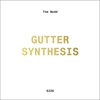 “The six tracks on the album … were composed using Mudd’s own software, created specifically for this project. The Gutter Synthesis tracks are, in general, more austere and meandering. The first features an interesting interplay between a low drone and varying quantities of shifting surface jitter and squeal, highly metallic in character and punctuated by occasional sonic punches. In Gutter Synthesis 3 we hear an apparently arbitrary procession of sound objects, some low and gritty, others high and pure. … The three Gutter Organ pieces, as their name suggests, put much greater emphasis on pitch and have a more relaxed demeanour. Gutter Organ 3 is the longest track … and is therefore able to present a larger-scale, more variegated structure. … the piece breaks down into a lovely sequence of surging and spasming fragments, as if the stops and keys on an organ were being pulled out and pressed at random. … the ending is triumphant, all the musical elements suddenly becoming suspended and transfixed, as if captivated by some hidden force, ending the album in an unexpected burst of ecstasy.” (reviewed in June) [Digital]
“The six tracks on the album … were composed using Mudd’s own software, created specifically for this project. The Gutter Synthesis tracks are, in general, more austere and meandering. The first features an interesting interplay between a low drone and varying quantities of shifting surface jitter and squeal, highly metallic in character and punctuated by occasional sonic punches. In Gutter Synthesis 3 we hear an apparently arbitrary procession of sound objects, some low and gritty, others high and pure. … The three Gutter Organ pieces, as their name suggests, put much greater emphasis on pitch and have a more relaxed demeanour. Gutter Organ 3 is the longest track … and is therefore able to present a larger-scale, more variegated structure. … the piece breaks down into a lovely sequence of surging and spasming fragments, as if the stops and keys on an organ were being pulled out and pressed at random. … the ending is triumphant, all the musical elements suddenly becoming suspended and transfixed, as if captivated by some hidden force, ending the album in an unexpected burst of ecstasy.” (reviewed in June) [Digital]
38 | Þráinn Hjálmarsson – Influence of Buildings on Musical Tone
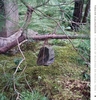 A recurring question triggered by the five works on this disc is the extent to which they constitute something tangible or just the possibility of it. Without in any way resorting to deliberately aloof or unengaging material, the title piece constantly gives the impression of something that’s just out of reach, and/or in the process of forming, as if the ensemble were trying to find ever new ways to almost play their instruments. Likewise, in solo viola work Persona Hjálmarsson throws the player into the stratosphere, creating music that seems to be slowly descending into a range where, possibly, we might be able to resolve it properly. There’s nothing conventionally ‘lyrical’ on this album, yet the combination of extreme delicacy and the highly tactile quality of the kinds of sounds Hjálmarsson uses – which often highlight how the instruments are being played – keep the works from being abstract essays, grounding them in something intimately human. [CD/Digital]
A recurring question triggered by the five works on this disc is the extent to which they constitute something tangible or just the possibility of it. Without in any way resorting to deliberately aloof or unengaging material, the title piece constantly gives the impression of something that’s just out of reach, and/or in the process of forming, as if the ensemble were trying to find ever new ways to almost play their instruments. Likewise, in solo viola work Persona Hjálmarsson throws the player into the stratosphere, creating music that seems to be slowly descending into a range where, possibly, we might be able to resolve it properly. There’s nothing conventionally ‘lyrical’ on this album, yet the combination of extreme delicacy and the highly tactile quality of the kinds of sounds Hjálmarsson uses – which often highlight how the instruments are being played – keep the works from being abstract essays, grounding them in something intimately human. [CD/Digital]
37 | Jakob Ullmann – Müntzers stern/solo II
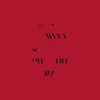 This latest double album of Ullmann’s music from Edition RZ does more than just offer another iteration of the composer’s sui generis approach to extreme quietness. Ullmann’s knack of zooming us up close to the infinitesimal, which in the process becomes uncannily present, is here turned on its head. In Müntzers stern, the sporadic sounds emerging from a lone bassoon are placed within an enormous reverberant space, a massive disparity that makes the instrument become infeasibly small. Yet as in so much of Ullmann’s work, a sense of wonder prevails, that such an ostensibly tiny entity can project into this space and cause it to resonate. This idea is extended in solo II where the instrument is slightly bolstered by the presence of a drone, resulting in more demonstrative behaviour. Both works force a Cagean contemplation on the relationship between ambient and composed sound; yet while they leave one wondering about the extent to which causes and effects are active or passive this only enhances their curious potency. [CD]
This latest double album of Ullmann’s music from Edition RZ does more than just offer another iteration of the composer’s sui generis approach to extreme quietness. Ullmann’s knack of zooming us up close to the infinitesimal, which in the process becomes uncannily present, is here turned on its head. In Müntzers stern, the sporadic sounds emerging from a lone bassoon are placed within an enormous reverberant space, a massive disparity that makes the instrument become infeasibly small. Yet as in so much of Ullmann’s work, a sense of wonder prevails, that such an ostensibly tiny entity can project into this space and cause it to resonate. This idea is extended in solo II where the instrument is slightly bolstered by the presence of a drone, resulting in more demonstrative behaviour. Both works force a Cagean contemplation on the relationship between ambient and composed sound; yet while they leave one wondering about the extent to which causes and effects are active or passive this only enhances their curious potency. [CD]
36 | Moritz Eggert – Musica Viva Vol. 30
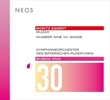 “Muzak is certainly an entertaining work, and it throws up some interesting considerations on the importance and integrity of genre definitions and their concomitant stylistic boundaries. Listening to the piece makes one acutely aware of how easy it is to compartmentalise the way we collectively regard music. But the work’s issues are significant, and potentially insurmountable. … In Masse, Eggert set out “to write an orchestral piece in which all the musicians would have to play without pausing”. … it’s pretty easy to believe that, once the piece has got going, after a faltering start, every moment of its 18-minute duration does involve all of the players doing something. Constantly. i’ve never heard anything quite like it, to be honest; the cumulative effect – and to do it properly, Eggert of course uses a large orchestra – is by turns incredibly unwieldy and hopelessly over-detailed. When the orchestra is united, it’s impossible to describe the players as moving “as one”, as it’s only too obvious how many individuals are involved in each musical idea. And when unity is abandoned – more often – it’s about as preposterously variegated as music could ever be, a dawn chorus in extremis. It seems to me there’s something triumphant about Masse, and that its occasional coalescences into foot-stomping rhythmic poundings and motivic machine-building like Beethoven on steroids aren’t desperate attempts at consensus but miracles of group coordination that practically defy belief. … It’s a breathtakingly audacious achievement.” (reviewed in December) [CD]
“Muzak is certainly an entertaining work, and it throws up some interesting considerations on the importance and integrity of genre definitions and their concomitant stylistic boundaries. Listening to the piece makes one acutely aware of how easy it is to compartmentalise the way we collectively regard music. But the work’s issues are significant, and potentially insurmountable. … In Masse, Eggert set out “to write an orchestral piece in which all the musicians would have to play without pausing”. … it’s pretty easy to believe that, once the piece has got going, after a faltering start, every moment of its 18-minute duration does involve all of the players doing something. Constantly. i’ve never heard anything quite like it, to be honest; the cumulative effect – and to do it properly, Eggert of course uses a large orchestra – is by turns incredibly unwieldy and hopelessly over-detailed. When the orchestra is united, it’s impossible to describe the players as moving “as one”, as it’s only too obvious how many individuals are involved in each musical idea. And when unity is abandoned – more often – it’s about as preposterously variegated as music could ever be, a dawn chorus in extremis. It seems to me there’s something triumphant about Masse, and that its occasional coalescences into foot-stomping rhythmic poundings and motivic machine-building like Beethoven on steroids aren’t desperate attempts at consensus but miracles of group coordination that practically defy belief. … It’s a breathtakingly audacious achievement.” (reviewed in December) [CD]
35 | Autechre – NTS Sessions 1–4
 On the one hand, it would be simplistic and inaccurate to suggest that NTS Sessions 1–4 is some kind of career apotheosis, and that all of the duo’s creative roads had been leading to this point. Yet it’s fascinating to hear how Autechre have combined the shorter-form exuberant bursts of 2013’s Exai with the more austere and convoluted epics of 2015’s AE_LIVE to formulate a new kind of creative vision. Veering between two-minute amuse-oreilles, 20-minute meditations and an hour-long finale (echoing the range and structure of their 2008 150-minute ‘EP'(!) Quaristice.Quadrange.ep.ae), it may well be their most mature work to date. For while the complex beat evolutions are once again present, there’s a much more meditative tone permeating them, and in many cases beats are sidelined entirely in favour of more nebulous quantities of pitch and noise that bring to mind their fascinating collaborations with The Hafler Trio. NTS Sessions 1–4 isn’t the best thing Autechre has ever done – yet it’s impossible to deny that the album’s eight hours comprise an engrossing synthesis of everything they’ve made and demonstration of how incredibly innovative they continue to be. [Digital]
On the one hand, it would be simplistic and inaccurate to suggest that NTS Sessions 1–4 is some kind of career apotheosis, and that all of the duo’s creative roads had been leading to this point. Yet it’s fascinating to hear how Autechre have combined the shorter-form exuberant bursts of 2013’s Exai with the more austere and convoluted epics of 2015’s AE_LIVE to formulate a new kind of creative vision. Veering between two-minute amuse-oreilles, 20-minute meditations and an hour-long finale (echoing the range and structure of their 2008 150-minute ‘EP'(!) Quaristice.Quadrange.ep.ae), it may well be their most mature work to date. For while the complex beat evolutions are once again present, there’s a much more meditative tone permeating them, and in many cases beats are sidelined entirely in favour of more nebulous quantities of pitch and noise that bring to mind their fascinating collaborations with The Hafler Trio. NTS Sessions 1–4 isn’t the best thing Autechre has ever done – yet it’s impossible to deny that the album’s eight hours comprise an engrossing synthesis of everything they’ve made and demonstration of how incredibly innovative they continue to be. [Digital]
34 | Brian Eno – Music for Installations
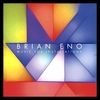 It seems fitting that in the fortieth anniversary year of the first ‘ambient’ album (his seminal Music for Airports), Brian Eno should so extensively revisit the genre that he inaugurated and defined. There’s more to Eno than just ambient, of course, just as there’s more – a lot more – to ambient than just Eno. Yet when the two coincide, as they do on this gloriously massive 5-hour extravaganza, the results tend to be extraordinary. Still just as interesting and ignorable as ever, there are numerous echoes and developments here of the behavioural stases Eno established forty years ago: exercises in shifting densities over flat dynamic planes, drifting elements in homogeneous soups, singular sonic objects gradually revealing more and more facets, all of which act as a reminder of the potential of such long-established methodologies while at the same time refreshing them for a new generation. Perhaps encapsulated best in the 30-minute ‘Atmospheric Lightness’ – effortlessly marrying extreme gentleness with surprisingly forceful levels of energy – this is ambient at its purest, cleverest, simplest and most beautiful best. [Deluxe Edition/CD/Digital]
It seems fitting that in the fortieth anniversary year of the first ‘ambient’ album (his seminal Music for Airports), Brian Eno should so extensively revisit the genre that he inaugurated and defined. There’s more to Eno than just ambient, of course, just as there’s more – a lot more – to ambient than just Eno. Yet when the two coincide, as they do on this gloriously massive 5-hour extravaganza, the results tend to be extraordinary. Still just as interesting and ignorable as ever, there are numerous echoes and developments here of the behavioural stases Eno established forty years ago: exercises in shifting densities over flat dynamic planes, drifting elements in homogeneous soups, singular sonic objects gradually revealing more and more facets, all of which act as a reminder of the potential of such long-established methodologies while at the same time refreshing them for a new generation. Perhaps encapsulated best in the 30-minute ‘Atmospheric Lightness’ – effortlessly marrying extreme gentleness with surprisingly forceful levels of energy – this is ambient at its purest, cleverest, simplest and most beautiful best. [Deluxe Edition/CD/Digital]
33 | Christopher Trapani – Waterlines
 This first disc devoted to the music of US composer Christopher Trapani highlights the diversity of his outlook. It’s tempting to look at the Blues throwbacks and allusions at the core of Waterlines (a work lamenting the aftermath of Hurricane Katrina), the anonymous networks of fierce attacks that make up the blink-and-you’ll-miss-it Passing Through, Staying Put and the internalised overlapping melodic strains of string quartet Visions and Revisions and wonder whether Trapani’s aim is to create as disparate an oeuvre as possible. Yet what unites them is a powerful lyrical impulse, which regardless of whether it sings with a literal voice (as in Waterlines) or articulates itself in non-verbal ways nonetheless communicates ideas that always resound with deep emotive conviction. This finds the most extravagantly delicious expression in the three movements of Cognitive Consonance, where a collection of geographically disjunct instruments improbably come together to play, in every sense of that word. Trapani gradually opens out the piece and the players from quasi-warm-up exercises to increasingly extended bursts of high floridity to introspective episodes of microtonal closeness, culminating in a very different immersion from the tragic one that opens the disc, surrounding us in the most gorgeously dreamy and fragrant opulence. [CD/Digital]
This first disc devoted to the music of US composer Christopher Trapani highlights the diversity of his outlook. It’s tempting to look at the Blues throwbacks and allusions at the core of Waterlines (a work lamenting the aftermath of Hurricane Katrina), the anonymous networks of fierce attacks that make up the blink-and-you’ll-miss-it Passing Through, Staying Put and the internalised overlapping melodic strains of string quartet Visions and Revisions and wonder whether Trapani’s aim is to create as disparate an oeuvre as possible. Yet what unites them is a powerful lyrical impulse, which regardless of whether it sings with a literal voice (as in Waterlines) or articulates itself in non-verbal ways nonetheless communicates ideas that always resound with deep emotive conviction. This finds the most extravagantly delicious expression in the three movements of Cognitive Consonance, where a collection of geographically disjunct instruments improbably come together to play, in every sense of that word. Trapani gradually opens out the piece and the players from quasi-warm-up exercises to increasingly extended bursts of high floridity to introspective episodes of microtonal closeness, culminating in a very different immersion from the tragic one that opens the disc, surrounding us in the most gorgeously dreamy and fragrant opulence. [CD/Digital]
32 | Dita Von Teese – Dita Von Teese
 Perhaps few people had especially high hopes for Dita Von Teese’s first foray into music, but on the strength of this, she’s got a lot to offer. The ten tracks on her debut album bring together the worlds of dream pop, French chanson and lounge music to create a uniquely sensual and psychedelic soundworld that’s retro-tinged yet refreshingly new. The way Von Teese uses her voice is highly effective: at lot of the time, as one would expect, she’s emotionally-charged, breathy and sexual, melodies and whispers becoming tangible lines of perfume floating in larger nebulous clouds of fragrance. But elsewhere she occasionally adopts what appears to be an almost Ralf Hütter-like detachment, though over time this comes to resemble not so much an aloof demeanour than a kind of overloaded passion, as if the emotional level were ‘clipping’. At the end of the day, of course, it’s pop, but it’s impressively (and unexpectedly) pretty and evocative pop that does a whole lot more than just go through formulaic motions. [CD/Digital]
Perhaps few people had especially high hopes for Dita Von Teese’s first foray into music, but on the strength of this, she’s got a lot to offer. The ten tracks on her debut album bring together the worlds of dream pop, French chanson and lounge music to create a uniquely sensual and psychedelic soundworld that’s retro-tinged yet refreshingly new. The way Von Teese uses her voice is highly effective: at lot of the time, as one would expect, she’s emotionally-charged, breathy and sexual, melodies and whispers becoming tangible lines of perfume floating in larger nebulous clouds of fragrance. But elsewhere she occasionally adopts what appears to be an almost Ralf Hütter-like detachment, though over time this comes to resemble not so much an aloof demeanour than a kind of overloaded passion, as if the emotional level were ‘clipping’. At the end of the day, of course, it’s pop, but it’s impressively (and unexpectedly) pretty and evocative pop that does a whole lot more than just go through formulaic motions. [CD/Digital]
31 | Jeffery Alan Jones – Most Beautiful Island (Original Motion Picture Soundtrack)
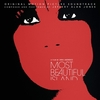 The first of several soundtracks on this list, all of which are as strikingly unusual as their movies are radically different from the norm. Ana Asensio’s Most Beautiful Island is a dark and deeply disturbing 80-minute independent horror-thriller exploring the implications of being an illegal immigrant in the USA. Jeffery Alan Jones has responded with a stark score that combines austerity and warmth, where sharp shards of glass jostle uncomfortably alongside pseudo-horns, electronic oscillations and viscous swamps of sound that threaten to pull you in and trap you like an insect in amber. There’s great beauty in Jones’ score, though its the way (echoing the ‘beauty’ in the film’s title) that he continually undermines it, making it an increasingly superficial and/or nostalgic lifeline – vestiges of the ‘American Dream’ that may or, more likely, may not actually exist – in the midst of enveloping darkness that makes it so achingly poignant. Occasional, carefully chosen, moments of dialogue from the film reinforce this further, ultimately making for a contemplative yet claustrophobic soundworld. [CD/Digital]
The first of several soundtracks on this list, all of which are as strikingly unusual as their movies are radically different from the norm. Ana Asensio’s Most Beautiful Island is a dark and deeply disturbing 80-minute independent horror-thriller exploring the implications of being an illegal immigrant in the USA. Jeffery Alan Jones has responded with a stark score that combines austerity and warmth, where sharp shards of glass jostle uncomfortably alongside pseudo-horns, electronic oscillations and viscous swamps of sound that threaten to pull you in and trap you like an insect in amber. There’s great beauty in Jones’ score, though its the way (echoing the ‘beauty’ in the film’s title) that he continually undermines it, making it an increasingly superficial and/or nostalgic lifeline – vestiges of the ‘American Dream’ that may or, more likely, may not actually exist – in the midst of enveloping darkness that makes it so achingly poignant. Occasional, carefully chosen, moments of dialogue from the film reinforce this further, ultimately making for a contemplative yet claustrophobic soundworld. [CD/Digital]
30 | Erik Friedlander – Thoroughbreds (Original Motion Picture Soundtrack)
 For one of the year’s more nonchalantly outrageous dark comedies, Erik Friedlander has provided a score that deliberately but discreetly revels in its incongruous juxtapositions. Cool synthpop and gritty driving basslines are answered by mesmeric drumming patterns and textures fashioned from avant-garde instrumental techniques, establishing not just the physical but also the psychological context for the film’s two protagonists. In part, what makes the film so darkly comic is its dislocated relationship with emotions and feelings, and Friedlander’s score parallels this closely. In the best possible sense, there’s a lingering listlessness to much of the music – regardless whether it’s pumped up with energy, getting caught up in episodes of bliss, frenetically striking every possible part of a piano or constructing multiple layers of ponderous pitch, there’s often something glazed or enervated about it, as if the performers’ actions were one step removed from their motivations. By avoiding trying to make any of the music obviously witty, Friedlander manages to make the comedy of the film even more terribly black. [Vinyl/Digital]
For one of the year’s more nonchalantly outrageous dark comedies, Erik Friedlander has provided a score that deliberately but discreetly revels in its incongruous juxtapositions. Cool synthpop and gritty driving basslines are answered by mesmeric drumming patterns and textures fashioned from avant-garde instrumental techniques, establishing not just the physical but also the psychological context for the film’s two protagonists. In part, what makes the film so darkly comic is its dislocated relationship with emotions and feelings, and Friedlander’s score parallels this closely. In the best possible sense, there’s a lingering listlessness to much of the music – regardless whether it’s pumped up with energy, getting caught up in episodes of bliss, frenetically striking every possible part of a piano or constructing multiple layers of ponderous pitch, there’s often something glazed or enervated about it, as if the performers’ actions were one step removed from their motivations. By avoiding trying to make any of the music obviously witty, Friedlander manages to make the comedy of the film even more terribly black. [Vinyl/Digital]
29 | Kenneth Hesketh – In Ictu Oculi – orchestral works
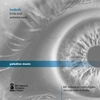 “if it wasn’t for the music’s traces of playfulness and retreats into delicacy, one might start to feel intimidated. Yet that’s precisely what one feels in … Knotted Tongues and In Ictu Oculi, where the levels of ferocity don’t merely work against but actively destroy the focused precision heard in his earlier works. In the former, the violence is often overwhelming: … Hesketh unleashes the most enormous eruption, a completely unexpected detonation that sends sparks and fragments of musical shrapnel flying all over the place. Even more impressive than this, though, is the fact that … Hesketh maintains tension for long periods without letting up, despite the piece moving through a widely varying topographical landscape … sometimes littered with accents making the surface seem like it’s sizzling, elsewhere breaking and reforming like waves crashing on top of us, or just letting rip in vast quantities of full-blooded strata that threaten to crush everything. … [In Ictu Oculi] is one of Hesketh’s most powerful compositions, demonstrating a range and amount of volatility that’s genuinely unsettling. … the back-and-forth between spotlighting lyrical, carefully-articulated individual lines and gigantic onslaughts of overloaded mass action is so extreme that it feels positively unhinged. Here is the polar opposite to the diamond-cut clarity of Hesketh’s earlier work: where details become flotsam on a sea of uncertainty, where groups of players at times sound like they really have no idea what on earth they should be doing next, where the orchestra gets stuck as if held by a tractor beam, and where an earnest, gentle idea is subjected to a relentless barrage of hammer blows rained down upon it.” (reviewed in December) [CD/Digital]
“if it wasn’t for the music’s traces of playfulness and retreats into delicacy, one might start to feel intimidated. Yet that’s precisely what one feels in … Knotted Tongues and In Ictu Oculi, where the levels of ferocity don’t merely work against but actively destroy the focused precision heard in his earlier works. In the former, the violence is often overwhelming: … Hesketh unleashes the most enormous eruption, a completely unexpected detonation that sends sparks and fragments of musical shrapnel flying all over the place. Even more impressive than this, though, is the fact that … Hesketh maintains tension for long periods without letting up, despite the piece moving through a widely varying topographical landscape … sometimes littered with accents making the surface seem like it’s sizzling, elsewhere breaking and reforming like waves crashing on top of us, or just letting rip in vast quantities of full-blooded strata that threaten to crush everything. … [In Ictu Oculi] is one of Hesketh’s most powerful compositions, demonstrating a range and amount of volatility that’s genuinely unsettling. … the back-and-forth between spotlighting lyrical, carefully-articulated individual lines and gigantic onslaughts of overloaded mass action is so extreme that it feels positively unhinged. Here is the polar opposite to the diamond-cut clarity of Hesketh’s earlier work: where details become flotsam on a sea of uncertainty, where groups of players at times sound like they really have no idea what on earth they should be doing next, where the orchestra gets stuck as if held by a tractor beam, and where an earnest, gentle idea is subjected to a relentless barrage of hammer blows rained down upon it.” (reviewed in December) [CD/Digital]
28 | Jóhann Jóhannsson – Mandy (Original Motion Picture Soundtrack)
 It’s wonderfully fitting that Jóhannsson’s final film score should be his best. By turns achingly intimate and an overdriven colossus, Jóhannsson’s response to Panos Cosmatos’ brilliant sophomore movie has been not merely to tap into the blacker-than-black insanity of its themes of love and revenge, but to dive into it fully, in the process embracing the (in every sense of the word) metal that insinuates itself throughout. Jóhannsson has never sought to do that much in his movie scores, preferring understatement and implication to be sufficient to complement the action. Considering the on-screen excesses of Mandy, that’s a brave move, but it’s a wise one. The music opens up yawning abysses for the film to occupy, filling them with cavalcades of horns, buzzings, pounding drums and thrashing guitars (or should that be ‘axe-wielding’?), all reverberating seemingly into infinity. But Jóhannsson never loses sight of the love burning at the film’s core; set in the context of such overwhelming onslaught, these moments of tenderness are heartbreakingly lovely. [Vinyl/CD/Digital]
It’s wonderfully fitting that Jóhannsson’s final film score should be his best. By turns achingly intimate and an overdriven colossus, Jóhannsson’s response to Panos Cosmatos’ brilliant sophomore movie has been not merely to tap into the blacker-than-black insanity of its themes of love and revenge, but to dive into it fully, in the process embracing the (in every sense of the word) metal that insinuates itself throughout. Jóhannsson has never sought to do that much in his movie scores, preferring understatement and implication to be sufficient to complement the action. Considering the on-screen excesses of Mandy, that’s a brave move, but it’s a wise one. The music opens up yawning abysses for the film to occupy, filling them with cavalcades of horns, buzzings, pounding drums and thrashing guitars (or should that be ‘axe-wielding’?), all reverberating seemingly into infinity. But Jóhannsson never loses sight of the love burning at the film’s core; set in the context of such overwhelming onslaught, these moments of tenderness are heartbreakingly lovely. [Vinyl/CD/Digital]
27 | Jörg Widmann – Drittes Labyrinth/Polyphone Schatten
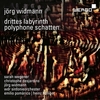 “… one of the most striking aspects of Polyphone Schatten is the way Widmann matches the rapidity that typifies much of his material with incredibly soft dynamics and articulations. That’s not exactly the work’s default position, but it’s a sort of ‘comfort zone’ to which the music regularly returns, often to the point of near-inaudibility due to being either extremely staccato or moving with quicksilver velocity. For the most part, Widmann avoids conventional dramatic highs and lows, favouring quantities of detail rather than sheer weight and mass, though two climactic passages later on are remarkable in respect of how unexpectedly they emerge and how enormous they sound in contrast to what’s gone before. Drittes Labyrinth is a piece that really takes its time, which makes the first 20 minutes or so feel like Widmann is dragging his feet. … However, it’s only once we’ve passed through these formative, nascent passages (which is how they appear in retrospect) that the work broadens out, opens up and proceeds to release what is evidently a vast amount of pent-up tension. … All of this is exhilarating in the extreme, but for me it’s the lyricism that’s most striking in this context. … here too Widmann seems much more interested in articulating things in moderation, tempering the overblown wildness with music that broods and contemplates, pulling back into drifting reverberation and shimmer, leading to a simply gorgeous vocalise from the soprano softly accompanied by strings.” (reviewed in December) [CD/Digital]
“… one of the most striking aspects of Polyphone Schatten is the way Widmann matches the rapidity that typifies much of his material with incredibly soft dynamics and articulations. That’s not exactly the work’s default position, but it’s a sort of ‘comfort zone’ to which the music regularly returns, often to the point of near-inaudibility due to being either extremely staccato or moving with quicksilver velocity. For the most part, Widmann avoids conventional dramatic highs and lows, favouring quantities of detail rather than sheer weight and mass, though two climactic passages later on are remarkable in respect of how unexpectedly they emerge and how enormous they sound in contrast to what’s gone before. Drittes Labyrinth is a piece that really takes its time, which makes the first 20 minutes or so feel like Widmann is dragging his feet. … However, it’s only once we’ve passed through these formative, nascent passages (which is how they appear in retrospect) that the work broadens out, opens up and proceeds to release what is evidently a vast amount of pent-up tension. … All of this is exhilarating in the extreme, but for me it’s the lyricism that’s most striking in this context. … here too Widmann seems much more interested in articulating things in moderation, tempering the overblown wildness with music that broods and contemplates, pulling back into drifting reverberation and shimmer, leading to a simply gorgeous vocalise from the soprano softly accompanied by strings.” (reviewed in December) [CD/Digital]
26 | Rohan Drape & Anthony Pateras – Ellesmere
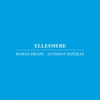 “For the two pieces on the album the duo brings together a pair of vintage organs, Drape playing a Yamaha YC45D, Pateras a Farfisa Compact Duo. In St John’s Wood … the emphasis is on slow-moving chord changes generally limited to the treble register. The connection between what Drape and Pateras are doing is deceptive: united by behaviour, by instrumental family, by timbre, by pretty much everything in fact, but are they actually connected and/or responsive to one another? It’s hard not to believe that they are, but the quietly aloof nature of the music, notes and clusters buzzing, shimmering and beating as they jostle and collide, makes the opposite seem just as plausible. The upshot of this is music that exhibits a complex relationship with notions of harmony and progression; … the micro- and macro-structural levels of the piece are so interconnected and also so ambiguous that they essentially become one and the same, so it’s impossible to listen without feeling simultaneously zoomed in and out, a lovely musical paradox. Its sense of development is also moot, where the introduction or removal of notes is somehow both subtle and abrupt (though never feeling like true non-sequiturs), making one question the broader shape and direction of the music; there’s a recurring sense of new episodes starting while retaining a sense of continuation, another lovely, liminal paradox.” (reviewed in June“) [CD/Digital]
“For the two pieces on the album the duo brings together a pair of vintage organs, Drape playing a Yamaha YC45D, Pateras a Farfisa Compact Duo. In St John’s Wood … the emphasis is on slow-moving chord changes generally limited to the treble register. The connection between what Drape and Pateras are doing is deceptive: united by behaviour, by instrumental family, by timbre, by pretty much everything in fact, but are they actually connected and/or responsive to one another? It’s hard not to believe that they are, but the quietly aloof nature of the music, notes and clusters buzzing, shimmering and beating as they jostle and collide, makes the opposite seem just as plausible. The upshot of this is music that exhibits a complex relationship with notions of harmony and progression; … the micro- and macro-structural levels of the piece are so interconnected and also so ambiguous that they essentially become one and the same, so it’s impossible to listen without feeling simultaneously zoomed in and out, a lovely musical paradox. Its sense of development is also moot, where the introduction or removal of notes is somehow both subtle and abrupt (though never feeling like true non-sequiturs), making one question the broader shape and direction of the music; there’s a recurring sense of new episodes starting while retaining a sense of continuation, another lovely, liminal paradox.” (reviewed in June“) [CD/Digital]
25 | Erkki-Sven Tüür – Illuminatio/Whistles and Whispers from Uluru/Symphony No. 8
 “One of the primary traits of Tüür’s music is energy, and large amounts of it, though the works on this disc demonstrate … that the way this energy is wielded is not only with devil-may-care abandon – though Tüür is hardly afraid of doing this – but just as often with considerable caution and care. Illuminatio, featuring soloist Lawrence Power, is a case in point, placing the viola within a context that encompasses both the monumental and the fantastical, guided by the soloist’s veering between momentum and lyricism. … The recorder part in Whistle and Whispers from Uluru … isn’t unlike a catalogue of behaviours from a motley collection of exotic birds … always maintaining the sense of an ongoing line of melodic invention though forever twisting and spiralling around a network of trills, twiddles and a myriad other curlicues, reinforced partway through with electronics – a moment that, depending on your perspective, either detracts from the work’s established tone or transcends it with some unexpected magic. … The highlight of the disc, though, is Tüür’s Symphony No. 8 … The second movement is both the symphony’s and this disc’s high point, thin strands of floating gossamer that slowly become enriched, leading to a gorgeous meditation, so subdued and focused at first that its subsequent expansion feels unnervingly immense.” (reviewed in August) [CD/Digital]
“One of the primary traits of Tüür’s music is energy, and large amounts of it, though the works on this disc demonstrate … that the way this energy is wielded is not only with devil-may-care abandon – though Tüür is hardly afraid of doing this – but just as often with considerable caution and care. Illuminatio, featuring soloist Lawrence Power, is a case in point, placing the viola within a context that encompasses both the monumental and the fantastical, guided by the soloist’s veering between momentum and lyricism. … The recorder part in Whistle and Whispers from Uluru … isn’t unlike a catalogue of behaviours from a motley collection of exotic birds … always maintaining the sense of an ongoing line of melodic invention though forever twisting and spiralling around a network of trills, twiddles and a myriad other curlicues, reinforced partway through with electronics – a moment that, depending on your perspective, either detracts from the work’s established tone or transcends it with some unexpected magic. … The highlight of the disc, though, is Tüür’s Symphony No. 8 … The second movement is both the symphony’s and this disc’s high point, thin strands of floating gossamer that slowly become enriched, leading to a gorgeous meditation, so subdued and focused at first that its subsequent expansion feels unnervingly immense.” (reviewed in August) [CD/Digital]
24 | Chaines – The King
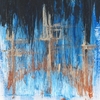 Music comes first; notions of ‘style’ and ‘genre’ come later. That fact is etched into the heart of The King, an album that, no matter how many times i’ve approached it, has consistently thwarted my attempts to deconstruct its aesthetic constitution. This is true on both the smaller scale, within each individual piece, as well as the larger scale, across the album, moving from track to track. Three minutes of sub-pitch grinding strings and unsettlingly close whispering (‘For Your Own Good’) leading to an exuberant, fanfaric dance over semi-hobbled beats (‘Knockturning’, which was wonderfully refashioned into an orchestral version for the Proms) before entering a long-form, slow-burn experiment with shifting elements only possibly related or connected to each other, situated within a cavernous space (‘Down’). And the remaining two-thirds of the album are, if anything, even more discombobulating, dense textures where clarity might emerge, half-lit environments where melodies sounds as half-remembered echoes, distorted by harsh squalls and underpinned by restless beats, occasionally crowned by Chaines’ voice, whose tongue seemingly can’t decide whether it wants to lick or lash. [Vinyl/Digital]
Music comes first; notions of ‘style’ and ‘genre’ come later. That fact is etched into the heart of The King, an album that, no matter how many times i’ve approached it, has consistently thwarted my attempts to deconstruct its aesthetic constitution. This is true on both the smaller scale, within each individual piece, as well as the larger scale, across the album, moving from track to track. Three minutes of sub-pitch grinding strings and unsettlingly close whispering (‘For Your Own Good’) leading to an exuberant, fanfaric dance over semi-hobbled beats (‘Knockturning’, which was wonderfully refashioned into an orchestral version for the Proms) before entering a long-form, slow-burn experiment with shifting elements only possibly related or connected to each other, situated within a cavernous space (‘Down’). And the remaining two-thirds of the album are, if anything, even more discombobulating, dense textures where clarity might emerge, half-lit environments where melodies sounds as half-remembered echoes, distorted by harsh squalls and underpinned by restless beats, occasionally crowned by Chaines’ voice, whose tongue seemingly can’t decide whether it wants to lick or lash. [Vinyl/Digital]
23 | Lance Austin Olsen – Dark Heart
 “… long durations allow Olsen the patience for atmospheres to be established and consolidated, for the complexity of sounds to be unravelled, and for a fascinating sense of narrative to emerge. In A Meditation on the History of Painting (the only work you’re likely to encounter that includes an ‘amplified iron park bench’) it’s tempting to hear the piece as an attempt to avoid any kind of direct statement … as if entirely disconnected from any kind of active creative impulse. Only when this vanishes into silence does the activity become more obviously deliberate, forming a dronal environment etched by deep scratches and fragments of recorded dialogue and singing (from a wax cylinder). … Dark Heart is even more impressive; the interplays of pitch and noise, of sustained and granular sounds, and of live and prerecorded elements, are present here too and they attain something that defies categorisation, something completely magical. i don’t use that word lightly: it’s difficult if not impossible to articulate precisely how the discrete elements Olsen uses in the piece … combine and coalesce to create something that so completely transcends them all. … like the avant-garde sound design for a futuristic noir filmed in ultra-high definition monochrome, it somehow manages to be elusive and immersive at the same time, projecting a narrative that’s whatever you want it to be and which is utterly convincing.” (reviewed in October)
“… long durations allow Olsen the patience for atmospheres to be established and consolidated, for the complexity of sounds to be unravelled, and for a fascinating sense of narrative to emerge. In A Meditation on the History of Painting (the only work you’re likely to encounter that includes an ‘amplified iron park bench’) it’s tempting to hear the piece as an attempt to avoid any kind of direct statement … as if entirely disconnected from any kind of active creative impulse. Only when this vanishes into silence does the activity become more obviously deliberate, forming a dronal environment etched by deep scratches and fragments of recorded dialogue and singing (from a wax cylinder). … Dark Heart is even more impressive; the interplays of pitch and noise, of sustained and granular sounds, and of live and prerecorded elements, are present here too and they attain something that defies categorisation, something completely magical. i don’t use that word lightly: it’s difficult if not impossible to articulate precisely how the discrete elements Olsen uses in the piece … combine and coalesce to create something that so completely transcends them all. … like the avant-garde sound design for a futuristic noir filmed in ultra-high definition monochrome, it somehow manages to be elusive and immersive at the same time, projecting a narrative that’s whatever you want it to be and which is utterly convincing.” (reviewed in October)
22 | Colin Stetson – Hereditary (Original Motion Picture Soundtrack)
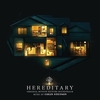 Not every great movie score accompanies a great movie. Hereditary turned out to be an ambitious though grossly over-hyped exercise in generic and increasingly silly horror fare, though what terrors it was able to elicit were largely down to Stetson’s incredibly effective soundtrack. Avoiding cheap cattle-prod shocks, Stetson weaves a sequence of expansive, glowering fabrics seemingly made from swashes of dark matter and molten lead. These he strategically allows to hover in a way that’s intensely threatening, particularly when power is applied, channelling them via shrieking strings, growling saxes and surging bass to form wave upon wave of judder, acting like a black tsunami pile-driving through the movie into our souls. Yet moments like this are relatively rare – which is why they’re so powerful – Stetson preferring to hold back and let the uncertainty of ideas allowed to stew and fester lead to a most pervasive sense of profound disquiet. [CD/Digital]
Not every great movie score accompanies a great movie. Hereditary turned out to be an ambitious though grossly over-hyped exercise in generic and increasingly silly horror fare, though what terrors it was able to elicit were largely down to Stetson’s incredibly effective soundtrack. Avoiding cheap cattle-prod shocks, Stetson weaves a sequence of expansive, glowering fabrics seemingly made from swashes of dark matter and molten lead. These he strategically allows to hover in a way that’s intensely threatening, particularly when power is applied, channelling them via shrieking strings, growling saxes and surging bass to form wave upon wave of judder, acting like a black tsunami pile-driving through the movie into our souls. Yet moments like this are relatively rare – which is why they’re so powerful – Stetson preferring to hold back and let the uncertainty of ideas allowed to stew and fester lead to a most pervasive sense of profound disquiet. [CD/Digital]
21 | Anna Thorvaldsdottir – Aequa
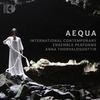 This latest disc featuring seven works by Icelandic composer Anna Thorvaldsdottir, performed by the International Contemporary Ensemble, elaborates further on the fascinating way her music harnesses opposites – in the form of fixed drones and free-wheeling ideas – to create pseudo-natural phenomena in sound. The organic nature of this is sometimes qualified by material that evokes folk music. In the case of string trio Spectra, it takes on an intensely sombre hue, as melancholic as a wake, overlaid with lighter, swooping glissandi. Fields is something of a sibling, its melodic lines surrounded by a dark, restless texture featuring fast percussive taps that resemble a kind of nervous tic. But Thorvaldsdottir’s music is more often than not strikingly and unconventionally abstract, and most of Aequa explores this in some depth. Sequences fashions music out of hocketed bursts of mere air that only slowly coalesce into tangible pitches and thence into a group idea, eventually leading to a seriously intense cycle of growling pedal notes. But for me Illumine is the most outstanding work here, where a string octet establishes a drone before smearing it outwards, violently punctuating it with slapped pizzicati and, eventually, arriving at a thoroughly weird place that sounds both resolved yet fundamentally troubled. Absolutely remarkable. [CD/Digital]
This latest disc featuring seven works by Icelandic composer Anna Thorvaldsdottir, performed by the International Contemporary Ensemble, elaborates further on the fascinating way her music harnesses opposites – in the form of fixed drones and free-wheeling ideas – to create pseudo-natural phenomena in sound. The organic nature of this is sometimes qualified by material that evokes folk music. In the case of string trio Spectra, it takes on an intensely sombre hue, as melancholic as a wake, overlaid with lighter, swooping glissandi. Fields is something of a sibling, its melodic lines surrounded by a dark, restless texture featuring fast percussive taps that resemble a kind of nervous tic. But Thorvaldsdottir’s music is more often than not strikingly and unconventionally abstract, and most of Aequa explores this in some depth. Sequences fashions music out of hocketed bursts of mere air that only slowly coalesce into tangible pitches and thence into a group idea, eventually leading to a seriously intense cycle of growling pedal notes. But for me Illumine is the most outstanding work here, where a string octet establishes a drone before smearing it outwards, violently punctuating it with slapped pizzicati and, eventually, arriving at a thoroughly weird place that sounds both resolved yet fundamentally troubled. Absolutely remarkable. [CD/Digital]
